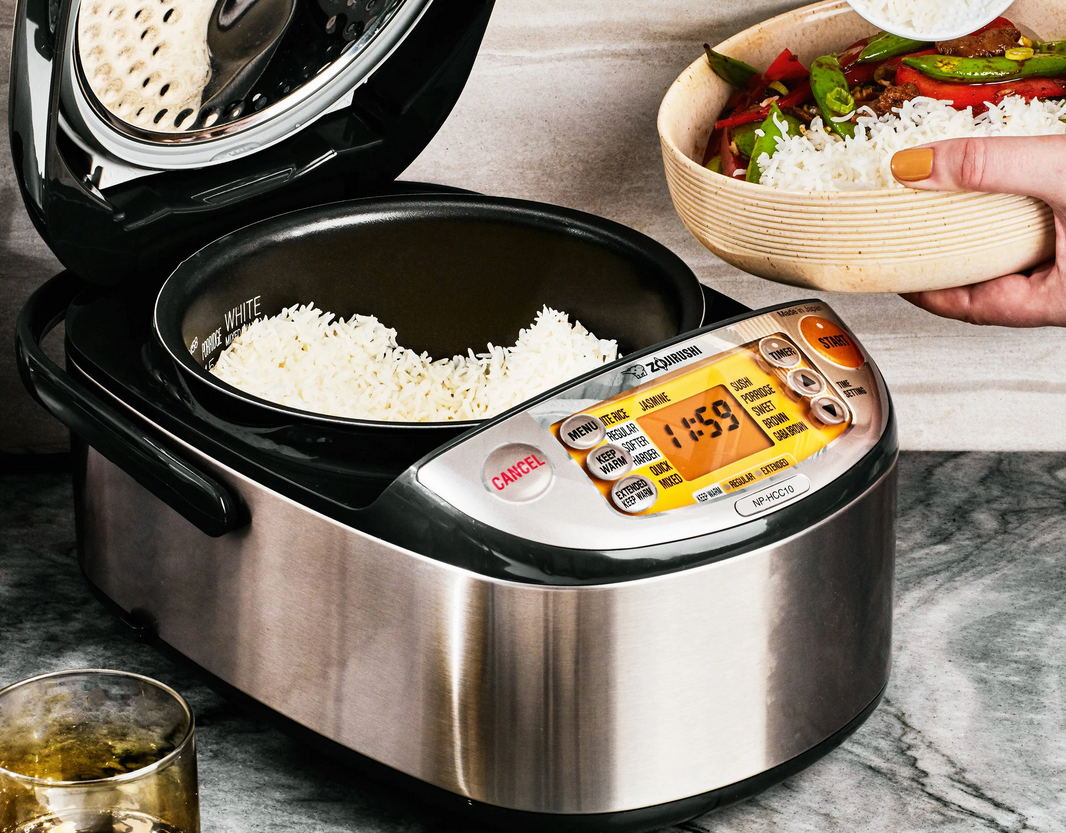One of the staple products that is enjoyed by many is rice. Rice is primarily consumed around the world. People have been boiling rice using conventional methods; however, the invention of an instant rice cooker has added innovation and a sure-shot solution to get fool-proof rice every time.
Is Rice Supposed To Bubble In Rice Cooker?
Yes, rice would always bubble in a rice cooker. When boiling rice in regular pots, rice bubbles spill out at some point, so most individuals go for rice cookers, hoping it doesn’t bubble over. But, it turns out rice still bubbles even in rice cookers.

Rice bubbles because of the starch in the rice. When mixed with hot water, the starch produces a white foamy substance that pours from the cooker. Hence, rice bubbling in a rice cooker will always happen and will not cause alarms.
The Rice cooker works by adjusting the water-to-rice ratio, which is different for different types of rice. As the water is absorbed into the rice, the temperature increases. The growth speeds up as the water is absorbed, triggering lower heat. This indicates that the rice is done.
We have all heard of pressure cookers, microwaves, and the latest Instant Pot, which has saved many people’s cooking time. Similarly, rice cookers, also referred to as rice steamers, are known to cook rice to the perfect consistency.
To start cooking in the rice cooker, you first need to fill the metal bowl with two parts water and one part rice and turn the appliance on. The heating element is thus turned on, and the thermostat is adjusted below the pan. The pan is made of aluminum, a conductor of heat, and therefore transfers heat to it. The heat source makes the rice cook, whereas the thermostat ensures that the rice is not overcooked. It ensures that the temperature is maintained to cook the rice perfectly.
As the rice starts cooking, the water in the metal bowl begins to boil due to the heat.
This boiling water will reach the temperature of approximately two hundred and twelve Fahrenheit, turning water into steam. This steam is thus carried into the rice and cooks it effectively.
The rice then absorbs the water; therefore, the starch and sugar in the rice are combined with the hydrogen in the water. In simple terms, both elements start to connect.
Here is a catch. If you add more water, the rice will absorb more water and become mushy. If you keep it on the heat, the rice will get burnt and give a crispy effect. This is the difference between a rice cooker and manual rice cooking. The Rice cooker has a sensor that checks how much the temperature has risen and to what degree it should be maintained. The temperature will grow much faster if the bowl has less water.
When this level is reached, the rice cooker automatically shuts down and indicates that the rice has been cooked.
How Can I Prevent Tiny Bubbles To Appear on Top of My Rice Cooker?
Even though rice can be perfectly normal to bubble and spill over, this can be very unpleasant sometimes. But here are steps to take to prevent this occurrence:
- Adding a few drops of oil is one of the most effective ways to prevent the rice from bubbling. This breaks the bubbles apart and stops them from spilling out.
- Another is to soak the rice for some minutes before boiling it. Soaking rice can prevent bubbling and soften the grains after it rinses and is cooked with fresh water.
- The starch in rice causes it to foam and bubble. Washing the rice thoroughly before boiling can prevent tiny bubbles.
- Less starch in rice can reduce bubbling.
- Avoid overfilling the rice cooker. The rice should not be too much in your rice cooker. To do this, get a giant rice cooker to accommodate the quantity of rice you will cook.
What Is The Ratio For Rice To Water in a Rice Cooker?
Generally, a cooker’s standard ratio of rice to water is one cup of rice to one cup of water (1 1).
Every rice cooker comes with a manual, which gives a ratio suitable for the brand or model of the rice cooker. There are long grains like basmati and jasmine that do not require a lot of water to boil. This is to prevent the rice from being soggy. For brown rice, it is two ¼ cups of water to a cup of rice.
Rice cookers always come with measuring cooks; inside the rice, cookers are marked and measured. This makes measuring and accuracy easier for a user.
How Do You Make Rice Not Sticky in a Rice Cooker?
Cooking a perfect pot of rice can be challenging. But there are ways to ensure rice comes out perfectly and the grains don’t stick together.
- The most important hack is to rinse your rice properly before boiling it in your rice cooker. This helps improve the outcome of your rice. The best way to wash your rice is under a running tap, after which the rice is immediately transferred to the cooker. This prevents the rice from sticking together.
- Adding a few drops of oil before boiling your rice can prevent the grains from sticking together.
- After boiling the rice, leave the lead-covered for about 10 minutes before opening and serving the rice. This will help prevent the rice from sticking together as well.
- How Many Tablespoons is One Clove of Garlic? - June 26, 2024
- How to Measure 3/4 Cup When You Don’t Have the Right Measuring Cup? - June 6, 2024
- How Much Does Cooked Pasta Weight Compare To Dry? - April 30, 2024
